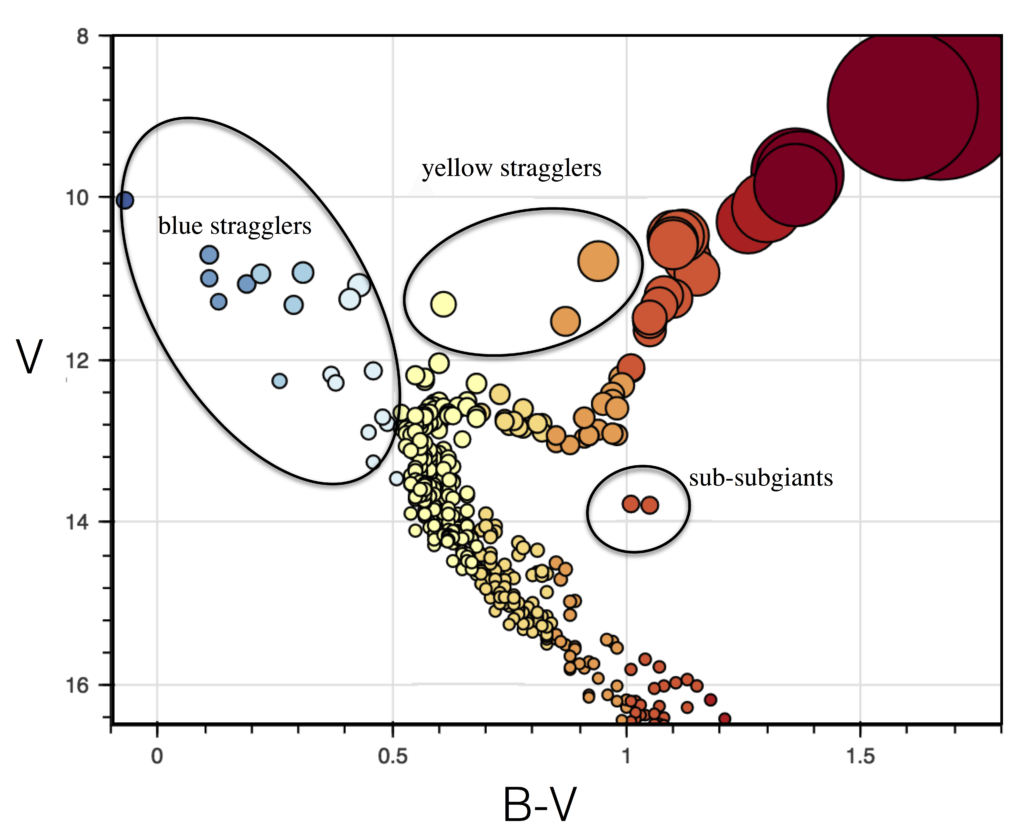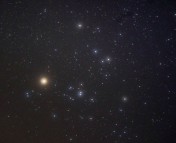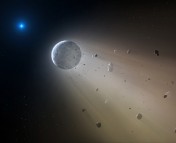This guest post was written by Catherine Manea, a first year graduate student at UT Austin. Catherine’s research involves tracing the chemical and dynamical evolution of the Galaxy using planetary nebulae and stars. In her free time, Catherine enjoys walking her dog and hiking the Austin trails.
Authors: Emily Leiner, Robert D. Mathieu, Andrew Vanderburg, Natalie M. Gosnell, and Jeffrey C. Smith
First Author’s Institution: University of Wisconsin-Madison
Status: Published in The Astrophysical Journal, open access on arXiv
Star clusters are comoving, gravitationally-bound groups of stars that were born more or less around the same time. Therefore, all stars in a cluster have about the same age. However, many clusters are home to blue straggler stars (BSSs) that, curiously, appear much younger (i.e. bluer, hence the “blue” part) than their fellow cluster members. Today’s paper investigates blue lurkers, the low-luminosity end of the BSS distribution, and how to identify them in star clusters via their anomalously short rotation periods.
Young, Blue Stars Refusing to Evolve?
To understand blue lurkers, we must first understand BSSs. BSSs have perplexed astronomers since 1953, when Allan Sandage created the first color-magnitude diagram (CMD) of M3, one of the largest and brightest globular clusters located in the Galactic halo. CMDs plot the absolute magnitude versus color of a stellar population, and the location of the main sequence “turn-off” is used to determine the age of the cluster. Massive, highly luminous blue stars leave the main sequence sooner than lower-mass, redder stars. Therefore, the fewer blue stars still reside on the main-sequence, the older the cluster. Figure 1 presents the CMD of M67, the cluster hosting the blue lurkers investigated by today’s paper. The main-sequence turn-off is located at the noticeable “hook” in the CMD. Note the peculiar population of blue stars to the left of the turn-off—those are BSSs.

Upon plotting the CMD of M3, Sandage noticed a group of stars that didn’t seem to fit in. They were bluer than the main-sequence turn-off and should have evolved off of the main sequence already. They appeared to be younger than the rest of their neighbors. This phenomenon is observed in many old globular clusters. It is natural to question whether these seemingly young stars are stowaways, infiltrators from other regions of the galaxy that have somehow found themselves hanging out with an older crowd of stars. However, that is not the case; these stars were born at the same time as their cluster neighbors. Instead, they have seemingly aged backwards by conspiring with another star through a binary interaction.
What’s their Secret to Youth?
Three main formation pathways explain the strange position of BSSs on the CMD: binary mass-transfer, binary mergers, and collisions. Highly dense portions of globular clusters see the most instances of BSSs, which supports the theory that these binary interactions create BSSs. In such interactions, two intermediate-mass stars combine or transfer mass to form a more massive star. More massive stars tend to be bluer, so this post-interaction object climbs up the main sequence. If the initial stars were massive enough, their combined final product surpasses the main sequence turn-off and ends up in the extremely blue BSS regime.
Blue Lurkers: the Shy Sibling of Blue Stragglers
Today’s paper investigates the meeker sibling of BSSs, “blue lurkers,” and methods to identify them in clusters. Blue lurkers are a lower-mass subset of BSSs: they are post-interaction objects that have moved up the main-sequence due to some sort of binary interaction. However, since they are the product of two low-mass stars interacting to form an intermediate-mass star, they lack the obvious, extremely blue CMD position held by BSSs. BSSs lie past the main-sequence turn-off in CMDs because their progenitors were two intermediate-mass stars that, when combined, produce a very massive star. Blue lurkers, on the other hand, are intermediate mass stars created from the interaction of two low-mass stars, so their CMD position is less-blue, overlapping with that of normal main-sequence stars. This is shown in Figure 2.
Binary Interactions Speed Up Stellar Rotation
Blue lurkers are hard to differentiate from regular stars because their position on the CMD blends in with that of main-sequence stars. The authors get around this by using the anomalously high stellar rotation rates shared by BSSs and blue lurkers to locate blue lurkers hiding in the main-sequence.
Stellar rotation is an age diagnostic because sun-like stars share spin-down trends. Upon formation, regardless of initial angular momentum, stars converge to a common initial rotation rate that slows predictably as the star ages. Blue stragglers and blue lurkers rotate much faster than single stars in the same region of the CMD because they’ve experienced some sort of interaction, such as binary mass transfer, a merger, or a collision, that has spun them up. Thus, by studying rotation rates in a sample of stars with similar masses and ages, one can point out stars that have experienced an interaction from their unusually high rotation rate. This is exactly what the authors did in today’s paper: they looked for anomalously-fast rotators that lie in the turn-off region of M67’s CMD to locate blue lurkers.
Typical sun-like stars in M67 have rotation rates of 20-30 days, so we expect all main sequence stars in the cluster to share this rotation rate. However, the authors discovered 11 M67 members with rotation periods shorter than 15 days that lie in the main sequence turn-off. These stars have the rotation rate of a much younger star, contradicting their position on the CMD. Given that they are confirmed members of M67, their unusually fast rotation must indicate that they have experienced a binary interaction, causing them to gain angular momentum and mass and appear bluer. These rapid rotators are formationally similar to BSSs except that they are lower in mass and thus don’t have an obvious, extreme blue position when plotted in a CMD.
Measuring Stellar Rotation
So how did the authors find these rapid rotators? They employed two methods: first, they looked for periodicity in the K2 lightcurves of M67 members. To search for periodicity, they created Lomb-Scargle periodograms of the lightcurves (Figure 3). Lomb-Scargle periodograms break down the light curve of an object into its component periods (think Fourier transform!).
Dark starspots co-rotating with the surface of a star cause periodic dimming of a star’s observed light and thus can be used to trace rotation. The most powerful period in the periodogram can be attributed to the rotation rate—around 3 days for the star in Figure 3—though other physical processes, such as planetary transits, binary eclipsing, and stellar pulsations can also cause the star’s light to change periodically with time. The authors found nine M67 members with anomalously rapid rotation rates using this method.
In addition to using K2 light curves, the authors looked for rapid rotation signatures in the spectra of M67 members. Rapidly rotating stars exhibit broader spectral lines due to the respective blue- and red-shifting of emitted light from approaching and receding edges of the star. Spectral line widths translate to vsini measurements, which signify the radial component of a star’s rotation speed relative to the observer. Vsini measurements were used in addition to K2 light curves to catch any additional rapid rotators that the light curve method might have missed. Two additional rapid rotators were found through this method, for a total of 11 rapid rotators at M67’s main sequence turnoff.
These 11 rapidly rotating single stars were found out of 400 main-sequence stars in M67, indicating that ~3% of main-sequence stars are blue lurkers. This result has important implications for the study of binarity in stellar clusters: binary surveys look for current binary systems but may fail to account for systems that were binaries but merged into singular stars, producing these blue lurkers and BSSs. Using rotation rates in tandem with direct imaging and spectral surveys can fill this gap.
Finally, the authors look to the future: their method of using rotation rates to identify post-interaction stars will be even more useful with the upcoming TESS and PLATO missions that will yield a wealth of new data in the coming decade.




